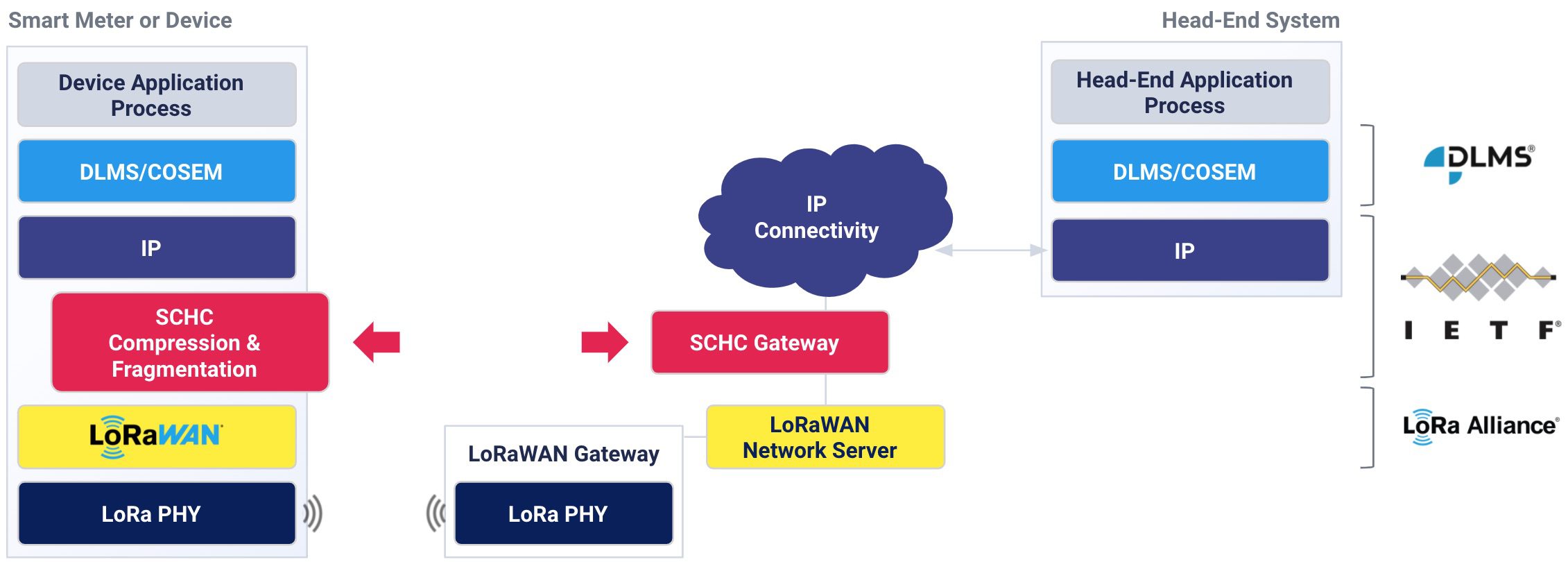The STM32WL recently received support for Acklio’s SCHC embedded libraries, enabling engineers to benefit from the new compression and end-to-end communication over IP on a LoRa network. The ST Authorized Partner provides reference implementations based on ST’s first MCU with a LoRa transceiver and on discrete solutions based on STM32 ultra-low-power devices. For instance, it can run on the NUCLEO-WL55JC, the B-L072Z-LRWAN1 Discovery kit, and the NUCLEO-L476RG with a LoRa-enabled shield.
Developers can request a free evaluation license, which covers up to 50 devices in a single IP network. The technology relies on IETF standards, ensuring their mass adoption and support while offering the ability to customize implementations. Hence, the solution overcomes some of the challenges inherent to low-power wide-area networks.
The Challenges Behind a Low-Power Wide-Area Network (LPWAN)
Why Does IoT Use Different Internet Technologies?
While the Internet of Things takes its name from the network that changed the world, IoT doesn’t always rely on traditional Internet protocols. For instance, the User Datagram Protocol (UDP) is ubiquitous and used by a myriad of applications. However, it isn’t a preferred solution for low-power devices with tremendous computational and memory restrictions. There are UDP implementations for microcontrollers, but developers don’t use them to connect thousands of sensors. Hence, developers use protocols that require less memory or computational throughput. The problem is that these technologies don’t always provide the opportunities that make the Internet so practical, such as an IP for each device.
What Are IPv6 over LoRaWAN and SCHC?
To overcome these challenges, the LoRa Alliance recently launched IPv6 Over LoRaWAN. As the name suggests, it enables IoT products to get an IPv6 address to facilitate secure communications and enjoy the practicality of IP packets over a LoRa network. Additionally, IPv6 over LoRaWAN specifies a compression and fragmentation technique called SCHC (pronounced “chic”). Recently defined by the IETF, it shrinks payloads and headers and can break up messages if they are bigger than the LoRaWAN’s MTU. SCHC works by defining a context and a framework that reflects what most packages will look like. Hence, the sender can omit a lot of header data since it can be reconstructed from the context by the receiver.
The Solutions to Improve Efficiency on LoRaWAN
How Does SCHC Compare?
The idea of compressing information over a network featuring low-power devices isn’t new. However, one may ask why the LoRa Alliance settled on SCHC. Researchers from the University of Ghent in Belgium published a paper1 in 2019 that answers this question. In it, the authors compare SCHC to the 6LoWPAN compression and fragmentation mechanism and conclude that SCHC needs “a lot less memory” and uses “a more suitable compression and fragmentation mechanism for LPWAN devices in terms of header overhead, reliability, and total number of packets exchanged.”
Acklio’s Implementation on STM32
The challenge for developers is to implement SCHC. The standard defines major specifications, but integration into an application is another thing altogether. Hence, Acklio offers an SCHC Embedded Library running on STM32 and even provides the ability to apply compression over DLMS/COSEM for smart meters. Indeed, according to Smart Energy International, DLSM / COSEM is the “most widely accepted International standard for utility meter data exchange.” In the simplest terms, DLSM (Device Language Message Specification) shapes the message, and COSEM (COmpanion Specification for Energy Metering) defines what goes into it. It enables interoperability between devices and provides a standard for the industry.

Acklio’s library for STM32 devices can compress IPv6/UDP headers and the DLMS wrapper to offer a reduction of up to 90% and a compression of 75% on the packet itself. As a result, smart meters need to transfer less data, which reduces their network usage and lowers the time the system needs to stay awake. It also improves the design’s sustainability. Lower energy and data requirements can also mean less maintenance and a longer lifespan on a single battery. To help developers get started, Acklio provides a DLMS Gurux server, client application, and example code. Additionally, using an STM32WL, the first MCU with an embedded LoRa transceiver, can help reduce the bill of material and simplify designs.
- Request access to Acklio’s Developer Program: IPv6 over LoRaWAN with SCHC
- Check out the STM32WL
- Grab the B-L072Z-LRWAN1 Discovery Kit
- B. Moons, A. Karaagac, J. Haxhibeqiri, E. D. Poorter and J. Hoebeke. “Using SCHC for an optimized protocol stack in multimodal LPWAN solutions”. IEEE 5th World Forum on Internet of Things (WF-IoT). 2019. pp. 430-435, https://doi.org/10.1109/WF-IoT.2019.8767210. ↩




